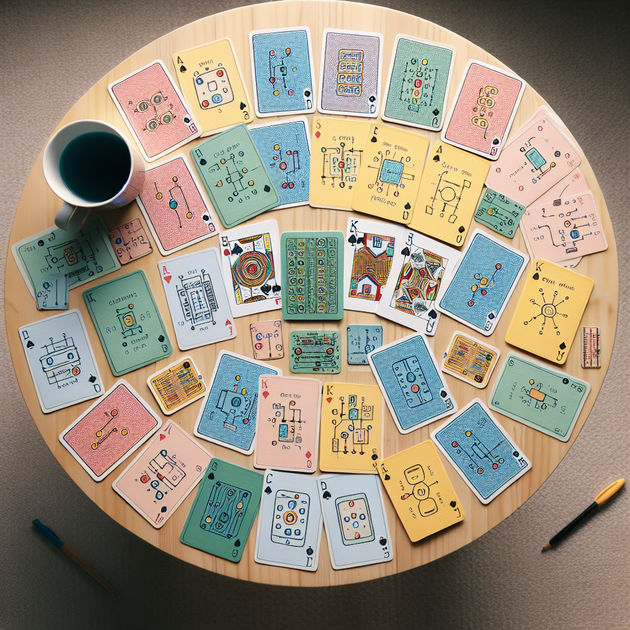Ever thought you could learn the fundamentals of electronics with just a deck of playing cards? It sounds almost too simple, but that’s exactly what Reddit user arjitraj_ set out to do—and the results are both clever and educational. Instead of thick textbooks or endless YouTube tutorials, imagine holding all the basics of electronic science right in your hands, one card at a time.
Why Use Playing Cards to Learn Electronics?
Sometimes, the best ideas are the simplest. Playing cards aren’t just for games—they’re the perfect size for quick facts, diagrams, and bite-sized lessons. Turning each card into a mini lesson makes it easy to review on the go, quiz yourself, or share knowledge with friends. Plus, the physical act of flipping through cards helps some people remember concepts better than scrolling on a screen.
Here’s why this approach stands out:
- Visual learning: Diagrams and color-coded notes help concepts stick.
- Portable: Take your “textbook” anywhere—no battery required.
- Hands-on: Shuffle cards to test your memory or mix up topics.
- Simplified content: Only the essentials make it onto each card.
- Fun factor: Learning feels more like play than study.
The Fundamentals of Electronics Covered in 52 Cards
So what actually fits into these cards? The goal was to cover the absolute essentials—the building blocks of electronic science. Here are some topics you’d likely find in such a deck:
- Basic concepts: Voltage, current, resistance, power
- Circuit symbols and diagrams
- Ohm’s Law and key formulas
- Types of components: Resistors, capacitors, inductors, diodes, transistors
- Series vs. parallel circuits
- Common circuit laws (Kirchhoff’s laws)
- Signal types: AC vs. DC
- Measurement tools (multimeter basics)
- Schematic reading tips
- Safety reminders
Every card is like a flashcard—short, sweet, and focused on one topic at a time. This makes it easy to build understanding step by step, without getting overwhelmed.
Anecdote: Bringing Electronics to Life—One Card at a Time
A college friend once struggled with the difference between series and parallel circuits—no matter how many times he read the textbook, it just didn’t click. When we tried out this card system together, something changed. Seeing side-by-side diagrams on separate cards made it clear as day. He started carrying a few key cards in his wallet and pulled them out whenever he needed a quick refresher during labs. Soon enough, he was explaining those same concepts to others!
Who Benefits from This Deck?
The beauty of summarizing the fundamentals of electronics in playing card form is that it works for all kinds of learners:
- Students: Perfect for quick study sessions before exams.
- Hobbyists: Handy reference for DIY electronics projects.
- Teachers: Visual aids to make lessons more interactive.
- Makerspaces: Fun group activities or competitions using the decks.
This method doesn’t replace deeper study or hands-on experience, but it’s an awesome supplement—and a creative way to keep core concepts fresh.
Getting Started with Your Own Electronics Card Deck
Inspired to try this yourself? Here are a few tips to create your own deck at home:
- Start with blank playing cards or sturdy index cards.
- Simplify each topic—one idea per card is best.
- Add clear diagrams or sample equations where they help most.
- Use color coding for different categories (components, formulas, laws).
- Create a few “challenge” cards with quiz questions or tiny circuit puzzles.
There’s no wrong way to make your study tools personal. The main thing is keeping information clear and concise—just enough for a quick review.
Electronics can seem complex at first glance, but breaking it down into bite-sized pieces makes all the difference. Whether you’re new to electronic science or brushing up on old skills, could this playful method be the missing link in your learning journey?

Leave a Reply